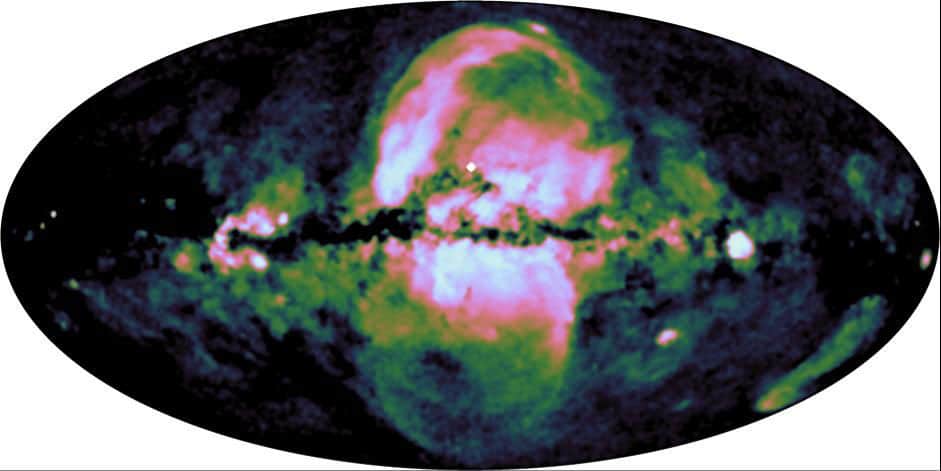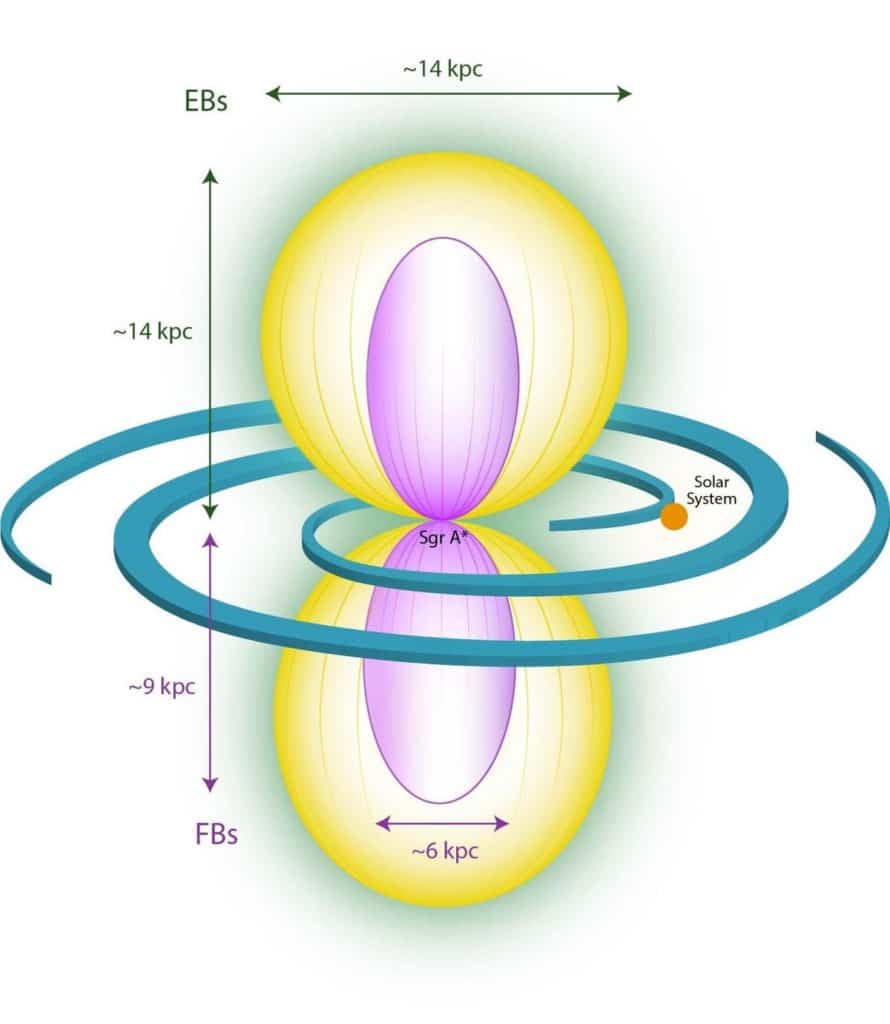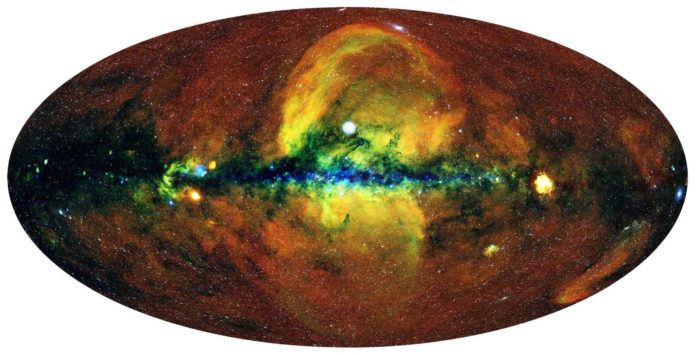The wind at the Milky Way center has been the topic of plenty of debate since the discovery a decade ago of the so-called Fermi Bubbles—two giant orbs filled with hot gas and cosmic rays. Recently, a large hourglass-shaped structure called eROSITA bubbles discovered in the Milky Way.
The bubbles got their name because they were discovered during the first all-sky survey performed by the eROSITA X-ray telescope on-board the Spektrum-Roentgen-Gamma (SRG) observatory.
Peter Predehl, the first author of the study now published in Nature, said, “The sharp boundaries of these bubbles most likely trace shocks caused by the massive injection of energy from the inner part of our galaxy into the galactic halo. Such an explanation has been previously suggested for the Fermi bubbles, and now with eROSITA, their full extent and morphology has become evident.”

Astronomers also detected a substantially circular structure of hot gas below the Milky Way plane, occupying most of the southern sky. A similar structure called the North polar spur can be detected in the Northern sky. The North polar spur is known for a long time and is believed to trace an old supernova explosion.
Michael Freyberg, a senior scientist working on eROSITA at the Max Planck Institute for Extraterrestrial Physics (MPE), said, “Thanks to its sensitivity, spectral and angular resolution, eROSITA has been able to map the entire X-ray sky to unprecedented depth, revealing the southern bubble unambiguously.”
The large-scale X-ray emission in its medium energy band (0.6-1.0 keV) suggests that the bubbles’ intrinsic size is several kiloparsecs (or up 50,000 light-years) across, almost as large as the entire Milky Way.

According to astronomers, this discovery can help them understand the cosmic cycle of matter in and around the Milky Way and other galaxies.
The newly detected bubbles are believed to be formed by a burst of star formation or an outburst from the galactic center’s supermassive black hole.
Rashid Sunyaev, a Lead Scientist of the SRG Observatory in Russia, said, “eROSITA is currently completing the second scan of the entire sky, doubling the number of X-ray photons coming from the bubbles it has discovered. We have a tremendous amount of work ahead of us because the eROSITA data makes it possible to single out many X-ray spectral lines emitted by highly ionized gas. This means that the door is open to study the abundance of chemical elements, the degree of their ionization, the density and temperature of the emitting gas in the bubbles, and to identify the locations of shock waves and estimate characteristic timescales.”
Journal Reference:
- P. Predehl et al. Detection of large-scale X-ray bubbles in the Milky Way halo, Nature (2020). DOI: 10.1038/s41586-020-2979-0
